|
As we are moving into an athletics unit in PE, there is a perfect link to the unit of inquiry happening in grade 3 at the moment on ‘Forces’. I will be supporting this unit of inquiry by creating as many learning opportunities as possible that help the students to understand the connections between forces and the different events in athletics. As a pre-assessment activity, I am going to have the students inquire into how Newton’s Laws apply to throwing. The lesson plan is as follows:
Considerations: I took a picture of the Newton’s Laws poster located on the wall in their classroom and included it on the worksheet to help prompt their thinking. There is a small version of it on the front of the sheet where they will be recording data and a much larger version on the back that they can refer to when in group discussion. Safety: The students will all throw object and collect at the same time (on ‘go’ command of teacher) to ensure safety.
2 Comments
Great to see the number of parents that have come down to see what their children are learning in PE. As the 'Sportfolio' contains all of the students' assessment, reflections, photos, and illustrations from PE, the kids can select whatever they like and explain these pieces to their parents. Having parents involved in their own kid's learning is such a wonderful experience and great to be a part of. I have asked a few parents to comment on what they enjoy most about the day and this is what they had to say: "Student led conferences are a great way for the kids to explain, in their own words, what they themselves are most proud of as opposed to teacher jargon on a report card" "It is an excellent way for our children to explain what they have learned in their own words with pride and excitement." "This is a great opportunity for parents to see a glimpse of their day in school and the progress that they have made in the different subject areas." "Good to see how the kids reflect on their learning and abilities in PE. A huge undertaking to keep written/photographic records of all the kids you teach!" "A wonderful opportunity to see what students are learning and how they are reflecting on these experiences. Listening to these explorations is worthwhile" 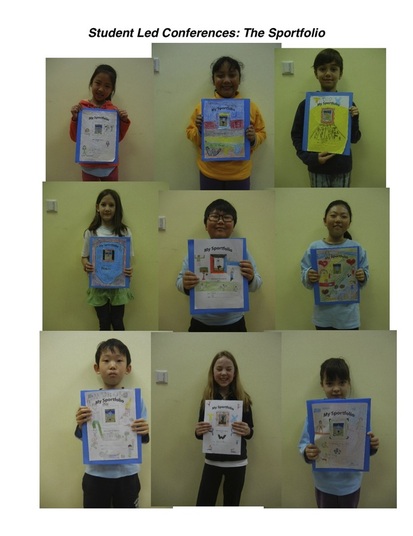 Student led conferences are an important time of year for our learners to show their parents the hard work they have put in during the year. As the single subjects are a very critical part of any transdisciplinary program, there is excellent opportunity to have the students show what they have done in PE. The ‘Sportfolio’ plays a very big role in my PE program. Filed away inside the ‘Sportfolio’ are numerous pieces of assessment, reflections, and maths integrated tasks. Student led conferences will take place next Wednesday at Nanjing International School. I am using some of class time this week for the students to prepare what they want to show their parents next week. This will be PE’s contribution to this important day. We have concluded gymnastics/movement to music and have now begun our athletics unit in preparation for elementary sports day which is scheduled for the end of April. As a general introduction to athletics, I have had the students in grades 2 and 4 take part in a number of different throwing and running activities. At each grade level, we have discussed time and distance as it relates to throwing and running. In my grade 3 classes, I am integrating with the unit of inquiry happening in the classroom on ‘Forces’ and will write about this further in a separate blog. Please see other blog for grade 4 maths integration with Athletics. In grade 2 the maths integration focus was to teach them about ordinal numbers as they relate to athletics and to help them to understand that when running races we aim to produce the lowest timed result possible. Throwing events are all about maximizing distance or in other words throwing an object as far as you can (the bigger the number, the better the result). The students sometimes get confused with these two and think that the higher the time, the better in a race. In order to help facilitate this understanding I set up a number of activities for the students. Resources Needed: Numbered dots (I have numerous sets of colored dots numbered between 1-10) Cones Hula Hoops Tape measure Stop Watch Bean Bags Laminated cards using following words: 1st(first), 2nd(second), 3rd(third), seconds, and meters Grade 2 lesson breakdown I had the numbered dots scattered in a corner of the gym. I set up 4 cones and, as a warm up, had the students run as many laps as they could during a 3-minute song. At the end of the song, the students were instructed to: 1) Run over to these numbered dots and stand on the dot that represents the number of laps run. The students compared their results but stayed on the dots 2) I then asked students to stand on two dots that showed the number of laps they ran. For example, if they ran 11 laps, they could have one foot on a 7 and one foot on a 4. They were not allowed to pick up and move any dots, so had to search for number combinations that equalled the number of laps run. Once done the warm up, the students were sent over to different colored hula hoops that had been set up before the lesson. They were divided into 6 different teams with each team having its own colored hula hoop. On the far side of the gym, the same colored hula hoops were set up leaning against the wall. The activities done were as follows: A) Have a relay race with each team member running to far side of gym reaching into hula hoop to touch wall and return as quickly as possible. Once complete the race, have quick discussion about what running fast means and looks like. B) Race again but this time tell the students that they will be timed. At the end of the race, the best result is shared with the class. The best result was 37 seconds. The winning team was then asked to go over to numbered dots scattered in corner and bring me back the numbers that make up 37. The number 37 was then posted on the wall and the students had to choose the appropriate ordinal number (laminated card) to match (1st-First) and choose the appropriate unit of measurement (seconds). The cards were also posted. Key questions to ask were: When we race again, do we want to produce a timed result that is higher than 37 or lower? A third of the class said “higher” which indicated to me that we needed to discuss further which we did. C) We ran the race a third time and this time, I shared the top 3 results. The top 3 results were 36, 37, 38sec. It was a perfect time to introduce ordinal numbers 2nd and 3rd and to have to kids choose the appropriate numbered dots to match the time and to put these times in the correct position. D) In the 4th race the students were given batons to use in the relay and asked whether or not they thought that using batons would slow the race down. Most agreed that using batons would slow the race down due to having to exchange. We ran the race and results were given. All results were slower as expected but still posted using numbered dots (old results were taken down) E) As one of the last activities, I asked the students to think about how they could speed up their times in the baton relay race. They were encouraged to communicate and practice how to better exchange the baton. Inquiry was at work as they had to think their way through this process. F) We ran the race again and all results were better than the previous race. These results were posted on the all. Teacher Reflection A very good lesson which was well organized. Students really seemed to understand ordinal numbers as they relate to athletics and were able to understand where their timed results fit into these ordinal numbers. 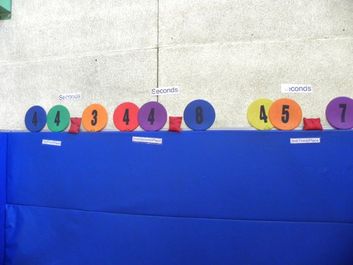 Grade 4 Lesson Breakdown The grade 4 lesson plan was very much similar to the grade 2 lesson plan described above. The main difference being that the grade 4 students were given their results in decimal point form. For example, some of their results from yesterday were 44.8, 46.2 and so on. They had to place these results in the correct order in terms of how each team finished the race. Bean bags were used as the decimal point. After each race new times were given and the students had to determine whether or not these results broke any of the previous time records. If so, they had to used numbered dots and post these results in correct order. Please see slide show below of grade 4s in action in yesterday’s PE class. In order to prepare my grade 3 and 4 students for their final routines, I had them complete movement composition booklets the last few weeks of the unit. As they were following a process, they needed to reflect at each step of this process in order to stay on track and improve. There were 6 steps in the process and knowing which step they were on helped them to stay focused on the routines they were creating with their other group members. The assessment criteria was generally the same for grades 3 and 4 and can be seen in my last blog. Once completed performing their routines, they had to draw their routines and explain what they were responsible for. The students did a wonderful job on these booklets. The classroom teacher allowed them about 20 minutes to complete their booklets which helped out a lot. This was an integrated unit with grade 3 as they were doing a UoI on how processes play an important role in the creation of art and music. Please view slide show below of their outstanding work. For those of you reading the previous blog regarding the flat classroom peer assessment project via Skype between NIS and UNIS, I thought it necessary to show the paper and pencil assessment used by students at both NIS and UNIS. Please view slide show below of student work. As you can see, the students had to use different colors when peer assessing. It was a quick and easy wa 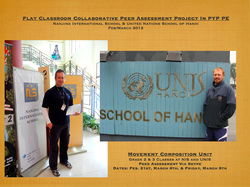 We had a very successful conclusion to our flat classroom peer assessment project yesterday afternoon. Grade 3 students from both Nanjing International School and United Nations International School took part in a summative assessment task that required them to perform routines not only in front of their own classmates, but also on Skype to the students watching from the other school. Cam McHale, elementary PE teacher from UNIS and myself collaborated on the assessment criteria and shared it with our students well in advance of yesterday's performances. It was clear to see that the students from UNIS and NIS were very engaged in this activity and were eager to perform on Skype. An added value component to this summative assessment task was that some students got up in front of the camera and provided verbal feedback after each routine which was well-received by the performing groups at UNIS and NIS. I would like to thank Cam McHale for his commitment in seeing this project through to its completion with me. It has been a rewarding journey for both myself and my students as it has been for Cam and his students. Cam and I will continue to collaborate on more possibilities to link our PYP PE programs together in an effort to enhance the learning of our students. Interested in joining this initiative? If so, contact me at [email protected]. Please view video and slideshow below! |
AuthorKAUST Faculty, Pedagogical Coach. Presenter & Workshop Leader.IB Educator. #RunYourLife podcast host. Archives
September 2022
|
- Welcome
- All Things Teaching and Learning
- The Aligned Leader Blog
- Consulting and Coaching Opportunities
- My TED X Talk
- My Leadership Blog
- Run Your Life Podcast Series
- How PYP PE with Andy Has Helped Others
- Good Teaching is L.I.F.E
- The Sportfolio
- Example Assessment Tasks
- PYP Attitude Posters (printable)
- Publications
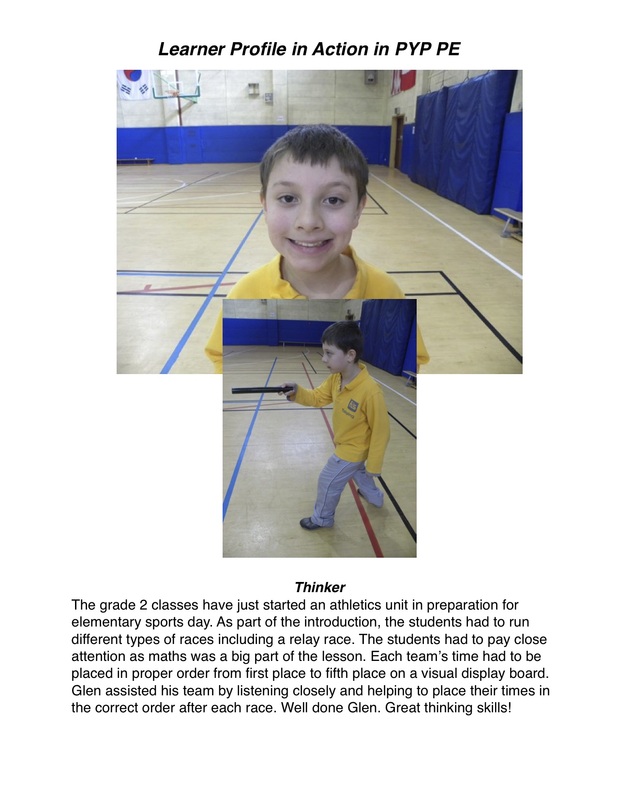
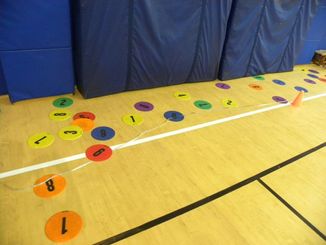
 RSS Feed
RSS Feed
